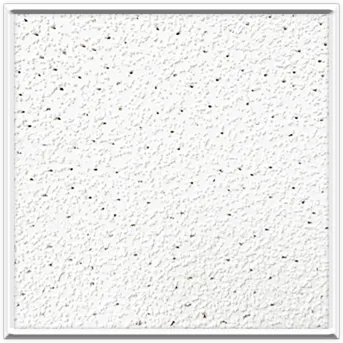- Afrikaans
- Albanian
- Amharic
- Arabic
- Armenian
- Azerbaijani
- Basque
- Belarusian
- Bengali
- Bosnian
- Bulgarian
- Catalan
- Cebuano
- Corsican
- Croatian
- Czech
- Danish
- Dutch
- English
- Esperanto
- Estonian
- French
- German
- Greek
- Hindi
- Indonesian
- irish
- Italian
- Japanese
- Korean
- Lao
- Malay
- Myanmar
- Norwegian
- Norwegian
- Polish
- Portuguese
- Romanian
- Russian
- Serbian
- Spanish
- Swedish
- Thai
- Turkish
- Ukrainian
- Uzbek
- Vietnamese
Kas . 09, 2024 13:15 Back to list
Suspended Ceiling Tile Framework for Enhanced Interior Design and Acoustics
Understanding Suspended Ceiling Tile Grids A Comprehensive Overview
Suspended ceiling tile grids are an essential component in modern commercial and residential architecture. Often referred to as drop ceilings, they serve both aesthetic and practical purposes, making them a popular choice for various applications. This article will explore the structure, benefits, installation, and maintenance of suspended ceiling tile grids, providing a detailed overview of their significance in contemporary design.
What is a Suspended Ceiling Tile Grid?
At its core, a suspended ceiling tile grid consists of a framework that supports ceiling tiles above the main ceiling structure. The grid is typically made from lightweight metal channels arranged in a grid pattern, designed to hold acoustic, decorative, or moisture-resistant tiles. The primary advantage of this system is that it allows for easy access to the space above the ceiling for maintenance of plumbing, electrical wiring, and HVAC systems.
Benefits of Suspended Ceiling Tile Grids
1. Aesthetic Appeal Suspended ceilings provide a clean and polished look to any room. With various styles, colors, and textures available, they can enhance the overall aesthetic of a space, making them ideal for offices, schools, and healthcare facilities.
2. Acoustic Control One of the most significant benefits of using suspended ceiling tile grids is their ability to improve sound acoustics. Special acoustic ceiling tiles can be integrated into the grid to absorb sound, reducing noise levels and creating a more comfortable environment for occupants.
3. Concealed Utilities The space between the grid and the original ceiling allows for the concealment of unsightly utilities, such as ductwork and wiring. This not only enhances the visual appeal of a space but also simplifies renovations and upgrades to existing systems.
4. Energy Efficiency Many ceiling tiles are designed to reflect light, which can help reduce lighting costs. Additionally, they can play a role in improving a building's insulation, thus contributing to overall energy efficiency.
5. Easy Installation and Maintenance Installing a suspended ceiling grid is relatively straightforward, requiring minimal tools and materials. Additionally, individual tiles can be replaced easily without disturbing the entire ceiling, making maintenance a breeze.
Installation Process
suspended ceiling tile grid

The installation of a suspended ceiling tile grid requires careful planning and execution. Here is a brief overview of the steps involved
1. Planning and Measurement Before installation, it is crucial to measure the room accurately. Determine the height at which the ceiling will be suspended and mark the locations for the grid.
2. Installing the Main Runner The main runners of the grid are attached perpendicular to the ceiling joists. They typically run across the longest dimension of the room, providing the primary support for the grid.
3. Adding Cross Tees Shorter cross tees are then inserted into the main runners to create the grid pattern. The spacing between various components will depend on the size of the ceiling tiles chosen.
4. Hanging Tiles Once the grid is complete, the ceiling tiles can easily be placed into the openings, completing the suspended ceiling.
5. Final Touches After installation, any necessary adjustments can be made to ensure that the tiles fit snugly within the grid, creating a polished and professional appearance.
Maintenance of Suspended Ceiling Tile Grids
Maintaining suspended ceiling tile grids involves regular inspections and cleaning. Dust and debris can accumulate on tiles, impacting their appearance and performance. Regularly removing tiles to clean and check for water damage or other issues is a good practice. In commercial spaces, it may be beneficial to implement a more scheduled maintenance program to ensure the ceiling remains in top condition.
Conclusion
Suspended ceiling tile grids are a versatile and practical solution for enhancing the aesthetics and functionality of any space. Their ability to accommodate various design preferences while offering practical benefits makes them a preferred choice for architects and builders alike. Understanding the components and advantages of suspended ceilings can help property owners make informed decisions, ensuring that their spaces are not only visually appealing but also efficient and functional. By integrating suspended ceiling tile grids, individuals can create environments that are conducive to productivity, comfort, and overall well-being.
-
Transform Interiors with PVC Gypsum Ceiling: A Stylish, Durable, and Moisture-Resistant SolutionNewsMay.19,2025
-
The Smart Interior Upgrade: Discover the Durability and Versatility of Gypsum Ceiling Access Panel SolutionsNewsMay.19,2025
-
The Smart Choice for Interior Design: Discover the Value of PVC Gypsum Ceiling SolutionsNewsMay.19,2025
-
Mineral Fiber Ceiling Tiles: The Smart Blend of Performance and AestheticsNewsMay.19,2025
-
Mineral Fiber Ceiling Tiles: The Superior Choice Over Gypsum for Sound and Fire SafetyNewsMay.19,2025
-
Mineral Fiber Ceiling Tiles: Eco-Friendly Strength and Style for Every CeilingNewsMay.19,2025







